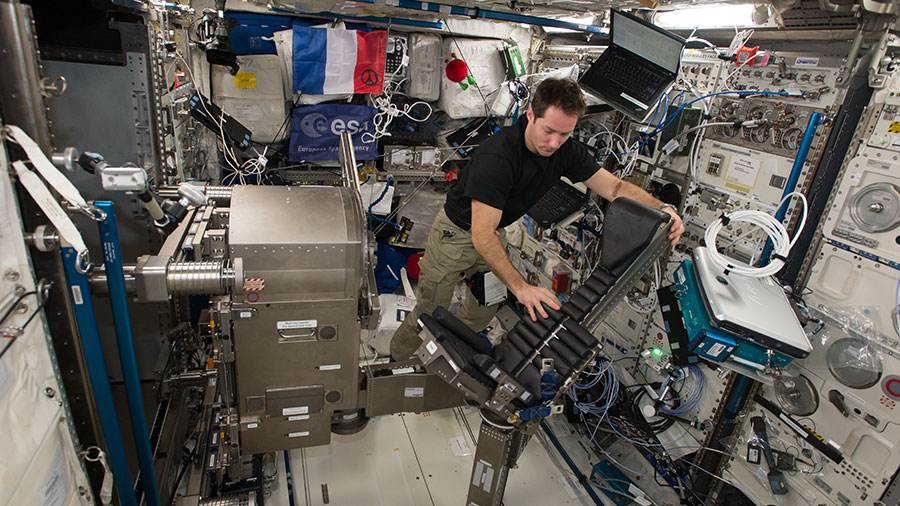
The Expedition 50 crew is getting ready for next week’s arrival and capture of Japan’s sixth resupply ship, the H-II Transfer Vehicle (HTV-6). The six station residents also worked on a pair of spacesuits and conducted a variety of human research experiments.
The Japan Aerospace Exploration Agency is set to launch its HTV-6 resupply ship Friday at 8:26 a.m. EST from the Tanegashima Space Center. Nicknamed “Kounotori,” the HTV-6 is delivering fresh fruit, experiment hardware, Cubesats, life support gear and new lithium-ion batteries. NASA Television will broadcast the HTV-6 launch live as well as its arrival next Tuesday at 6 a.m.
The new lithium-ion batteries will replace aging nickel-hydrogen batteries located on the S4 truss structure and upgrade the station’s power output. The replacement work will take place using a series of robotics maneuvers and spacewalks through mid-January.
Commander Shane Kimbrough and ESA astronaut Thomas Pesquet practiced next week’s HTV-6 robotic capture activities. The duo also reviewed the cargo craft’s rendezvous and approach maneuvers before its capture and installation to the Harmony module.
Kimbrough started his day with some plumbing work before scrubbing the cooling loops on two U.S. spacesuits. Pesquet assisted NASA astronaut Peggy Whitson in the morning with an ultrasound scan for the Cardio Ox study that explores the long-term risk of atherosclerosis in astronauts.
Whitson then moved on to collecting gear with cosmonaut Sergey Ryzhikov for upcoming work on the Fluid Shifts experiment. That experiment researches the pressure an astronaut experiences on the brain and eyes. Veteran cosmonauts Andrey Borisenko and Oleg Novitskiy worked on numerous Russian science experiments and life support systems.
Get weekly video highlights at: http://jscfeatures.jsc.nasa.gov/videoupdate/

I see why there has been a switch from the nickel based battery to the lithium ion battery. The nickel battery is heavier meaning they are less efficient. I was also wondering why they chose to deliver “fresh fruit”, just seemed a little peculiar.
Food aboard the space station is typically thermostabilized or dehydrated to maximize its shelf life. Cargo resupply flights provide an opportunity to provide a small amount of fresh foods, including fruit, that otherwise are not available during time onboard.
One word: morale.